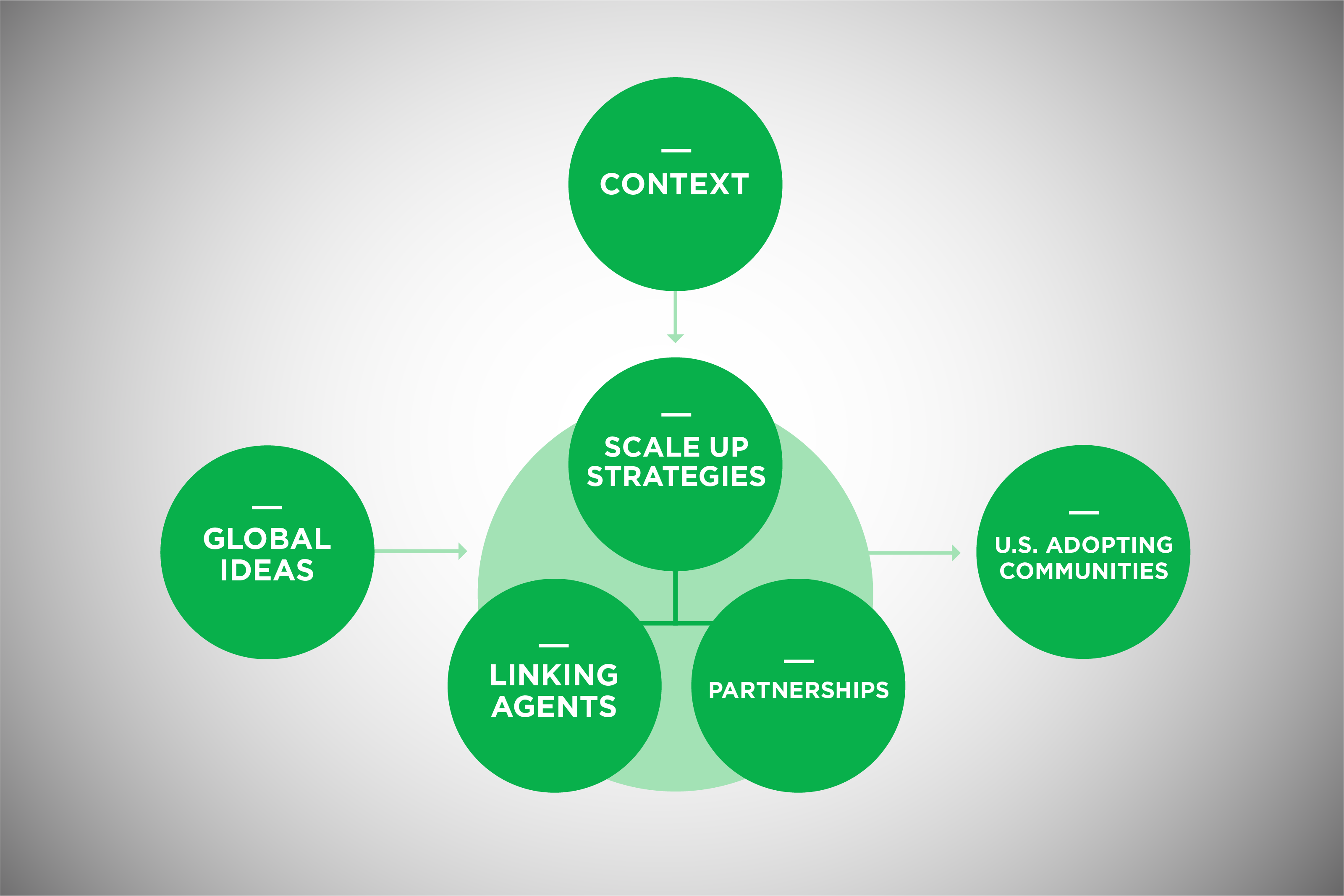Some ideas work. Others don’t. Researchers from the MSU College of ComArtSci recently examined global health care innovations that migrate to the United States, and provided a framework for making those ideas take hold in U.S. communities.
“A Model for Introducing Global Ideas to the U.S.” involved creating and testing a model for what helps and what hinders U.S. organizations from adopting successful health projects from other countries. Led by professors and students from the MSU Department of Communication and the Health and Risk Communication Center, the study also involved a diverse team of researchers from the University of Hawaii and Arizona State University and was supported by the Robert Wood Johnson Foundation.
“We know an innovation can start anywhere in the world and move into the U.S. context and take off,” said Maria Knight Lapinski, professor of communication and Michigan AgBio Research, and director of the Health and Risk Communication Center. “Part of our study is looking at why and when this happens and when it doesn’t. We’re interested in the conditions in the marketplace that help an idea grow or stop it from growing.”
The Power of Connections
Lapinski and MSU principal investigator James Dearing assembled a team to examine cutting-edge solutions from around the world that had been applied in the U.S. The five ideas selected for study were concepts that had proven effective in improving health care or health in particular communities.
“What’s so special on our project is that we were studying innovations from other countries, especially developing countries, that then are exported to the United States in the hope that they will benefit U.S. communities,” said Dearing, professor of communication.
For instance, one global idea examined by the team encourages community engagement and exercise and decreases social isolation by occasionally closing streets to vehicle traffic. The health innovation originated in Colombia, and was applied in Los Angeles Wayne County, Michigan, and myriad places worldwide. Other ideas examined by the team included those from Wales, Mexico, Sweden and South Africa that addressed violence prevention and reduction, culturally appropriate health care services for poor or disadvantaged communities, tracking health outcomes through a common database, and using peer-to-peer interaction to improve health outcomes and drive down health care costs.

The team’s research suggested that the successful diffusion and scale up of an innovative program can hinge on the relationship between community leaders in the U.S. and program inventors from other nations. These “linking agents” introduce the idea to the U.S. market, and can help get concepts off the ground by encouraging partnerships that lead to implementation strategies.
“We found that an innovation stands a better chance of diffusing and scaling up when local stakeholders can connect with those linking agents,” said Dearing. “Innovations also tend to be more successful in a locality when stakeholders can change certain aspects of the idea or customize things to their local community.”
Dearing and Lapinski said that the end result of the research will be a conceptual model that community leaders can use to help them make decisions about which programs to adopt. That model, they said, can help community stakeholders ascertain why certain global health care ideas diffuse more easily in the U.S., and why others need adaptations or strategies for successful implementation.
“There’s been research conducted for about 100 years in what explains the spread and effectiveness of innovations in health and health care programs,” said Dearing. “But there hasn’t been much attention at all paid to identifying promising answers to improving health and health care from other countries and importing those ideas to the U.S. That’s what this research attempts to do.”
The international and educationally diverse team involved in “A Model for Introducing Global Ideas to the U.S.” includes undergraduate, graduate and post-doctoral students and researchers.
